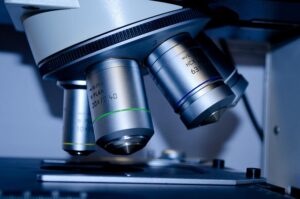Global collaboration in science faces language barriers that impact the accuracy and reliability of Laboratory Reports and Scientific Data. To overcome these, specialized translation services are crucial for conveying complex terminology and ensuring data integrity. Certification by recognized bodies, adhering to ISO 17100 standards, enhances authenticity, security, and trustworthiness, especially for international partnerships and academic publications. Best practices include using professional translators skilled in scientific fields, standardized formatting, digital batch translation platforms, digital signatures, secure file-sharing, and regular quality checks.
In today’s global scientific landscape, seamless communication across languages is vital. Translating and certifying laboratory reports and scientific data ensures accurate knowledge exchange, facilitating international collaboration and research advancement. This article guides you through the process, from understanding the need for translation to best practices for efficient handling. Learn about ensuring accuracy, reaping benefits of certified documentation, and navigating the steps required to make your scientific data universally accessible.
- Understanding the Need for Translation and Certification
- The Process of Translating Laboratory Reports
- Ensuring Accuracy in Scientific Data Translation
- Benefits of Certified Scientific Documentation
- Best Practices for Efficient Translation and Certification
Understanding the Need for Translation and Certification
In today’s globalized scientific landscape, researchers and laboratories often find themselves dealing with a diverse range of languages and cultural contexts. This presents a significant challenge when it comes to sharing and understanding laboratory reports and scientific data. Accurate translation and certification of these documents are crucial steps in ensuring effective communication and collaboration across borders.
The need for translation arises from the fact that many research institutions and scientific publications operate internationally, making it vital to communicate findings in a language that is accessible to peers and stakeholders worldwide. Laboratory reports and scientific data often contain complex terminology and nuanced details that require specialized knowledge to translate accurately. Certification further ensures the integrity and authenticity of these documents, enabling researchers to maintain professional standards and build trust in their work, particularly when sharing with international partners or submitting to global journals.
The Process of Translating Laboratory Reports
Translating laboratory reports is a meticulous process designed to ensure precise communication of scientific findings across languages and disciplines. It begins with a thorough review of the original report, where experienced translators carefully study every detail, from technical terms to experimental methodologies. This step is crucial for maintaining the accuracy and integrity of the data, as even subtle errors can impact interpretation.
Once the report is meticulously examined, the translation process commences. Our team of expert linguists leverages specialized terminology databases and industry-specific glossaries to deliver precise translations that respect the original intent. We work closely with scientists and researchers to confirm the scientific validity of the translated content, ensuring the accuracy of the data presented in the new language. This collaborative approach guarantees that laboratory reports and scientific data remain reliable and actionable regardless of their linguistic destination.
Ensuring Accuracy in Scientific Data Translation
Ensuring accuracy during the translation process is paramount, especially for laboratory reports and scientific data. When translating complex scientific documents, it’s crucial to have a deep understanding of both the source and target languages, along with expertise in the specific field. This involves carefully reviewing the original content to grasp technical terminology and specialized concepts accurately.
Professional translators should employ meticulous quality assurance measures, including cross-referencing terms and double-checking against the original text. Additionally, utilizing industry-specific glossaries ensures consistency across translated documents. For scientific data, it’s essential to validate numbers, units of measurement, and statistical analyses to maintain integrity throughout translation, making the process seamless and reliable for global communication.
Benefits of Certified Scientific Documentation
Certified scientific documentation offers a multitude of advantages for researchers, labs, and institutions dealing with laboratory reports and scientific data. First and foremost, it ensures accuracy and reliability, as certified documents have undergone rigorous verification processes. This is critical in fields like medicine, environmental science, and pharmaceuticals, where precise record-keeping can directly impact public health and safety.
Additionally, certified documentation streamlines workflows by providing standardized, accessible, and easily interpretable data. It simplifies the process of sharing information across international boundaries, fostering collaboration and accelerating scientific progress. Moreover, it enhances credibility, as certified reports carry weight in legal, regulatory, and academic settings, ensuring compliance with global standards.
Best Practices for Efficient Translation and Certification
Best Practices for Efficient Translation and Certification
When translating laboratory reports and scientific data, accuracy is paramount. To ensure precision, engage professional translators with expertise in scientific terminology to avoid misinterpretations. Standardization of formatting across all documents also facilitates the translation process, making it easier to identify critical information. Digital platforms that support batch translation can efficiently handle large volumes of data, streamlining workflows for research institutions and companies dealing with global scientific collaborations.
Certification is an integral step that ensures the authenticity and reliability of translated laboratory reports and scientific data. Recognized certification bodies should verify the accuracy of translations, adhering to industry standards such as ISO 17100. Digital signatures and secure file-sharing platforms can further bolster security, maintaining data integrity throughout the translation and certification process. Regular reviews and quality checks at each stage ensure that final documents meet the highest standards, fostering trust among global stakeholders in scientific research and collaboration.
In conclusion, translating and certifying laboratory reports and scientific data is paramount for global collaboration and knowledge exchange. By understanding the need, mastering the translation process, ensuring accuracy, recognizing benefits, and adopting best practices, researchers can seamlessly navigate the complexities of international communication. This ensures that critical scientific information remains reliable and accessible across borders, fostering innovation and progress in the field.
